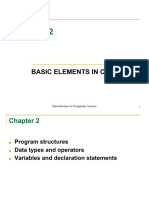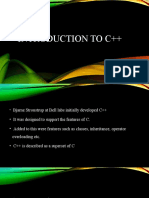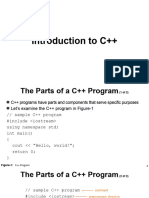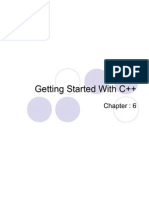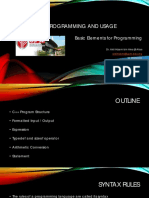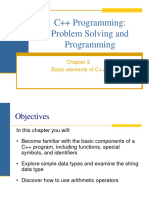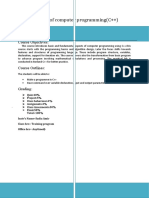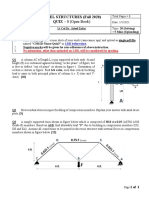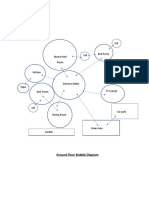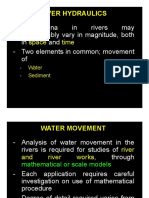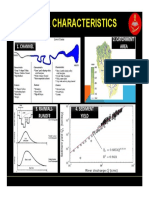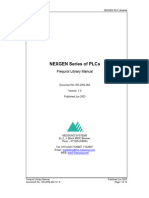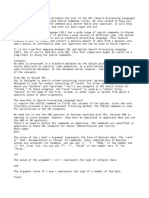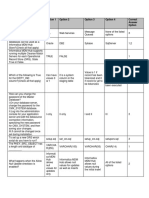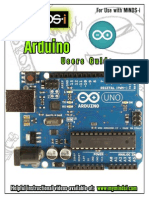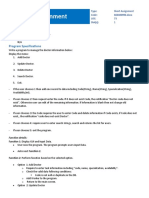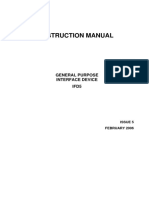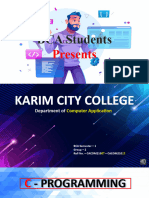0% found this document useful (0 votes)
76 views38 pagesProgramming in C++: in The Name of Allah The Most Merciful The Most Compassionate
The document provides an overview of C++ programming including:
1) A brief history of programming languages from machine language to C++ as an object-oriented extension of C.
2) The basic structure of a C++ program including preprocessor directives, header files, functions, and the main function.
3) Key concepts like variables, data types, operators, and comments.
4) Examples of declaring and initializing variables, arithmetic operators, comparison operators, and assignment operators.
Uploaded by
Alina RafeeqCopyright
© © All Rights Reserved
We take content rights seriously. If you suspect this is your content, claim it here.
Available Formats
Download as PDF, TXT or read online on Scribd
0% found this document useful (0 votes)
76 views38 pagesProgramming in C++: in The Name of Allah The Most Merciful The Most Compassionate
The document provides an overview of C++ programming including:
1) A brief history of programming languages from machine language to C++ as an object-oriented extension of C.
2) The basic structure of a C++ program including preprocessor directives, header files, functions, and the main function.
3) Key concepts like variables, data types, operators, and comments.
4) Examples of declaring and initializing variables, arithmetic operators, comparison operators, and assignment operators.
Uploaded by
Alina RafeeqCopyright
© © All Rights Reserved
We take content rights seriously. If you suspect this is your content, claim it here.
Available Formats
Download as PDF, TXT or read online on Scribd
/ 38

